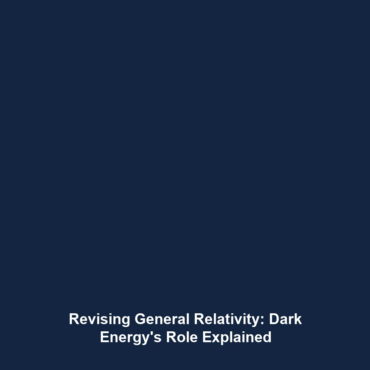<>
The Biggest Challenges in Dark Matter and Dark Energy Research
Introduction: Dark matter and dark energy are two of the most intriguing and perplexing components of our universe, collectively comprising around 95% of its total mass-energy content. The research into the biggest challenges in dark matter and dark energy is significant not only for our understanding of cosmic evolution but also for the fundamental principles of physics. As scientists strive to unveil the secrets behind these elusive phenomena, they encounter numerous obstacles that challenge current theoretical and observational frameworks. This article delves into these challenges, providing insight into their implications for the broader field of dark matter & dark energy.
Key Concepts
The study of dark matter and dark energy involves several key concepts that are pivotal to understanding the challenges faced in this field:
- Dark Matter: An invisible substance that does not emit light or energy, yet exerts gravitational effects on visible matter, radiation, and the universe’s large-scale structures.
- Dark Energy: A mysterious force that drives the acceleration of the universe’s expansion, influencing cosmic dynamics profoundly.
- Cosmic Microwave Background (CMB): The afterglow radiation from the Big Bang serves as vital evidence for understanding the universe’s early conditions, but presents challenges in measuring dark matter’s presence accurately.
- Gravitational Lensing: The bending of light from distant objects around massive bodies, used to infer the presence of dark matter, yet ambiguous interpretations emerge that complicate the analysis.
Applications and Real-World Uses
Understanding the biggest challenges in dark matter and dark energy research has profound implications for various fields:
- Astrophysics and Cosmology: Advances in understanding dark matter may lead to new models that help explain galaxy formation and evolution.
- Technology Development: Research into detector technologies for dark matter particles has potential applications in medical imaging and particle detection technologies.
- Space Exploration: Insights gained from dark energy research could refine our models of the universe, guiding future missions to explore other celestial systems.
These applications highlight how the challenges in dark matter research and dark energy not only deepen our understanding of the universe but also enhance technology across various domains.
Current Challenges
Despite significant progress, there are persistent challenges in studying dark matter and dark energy, including:
- Detection Limitations: Current experimental approaches struggle to detect dark matter particles, which interact very weakly with ordinary matter.
- Theoretical Discrepancies: Models explaining dark energy are varied, leading to confusion and debate within the scientific community.
- Observational Bias: Accurately measuring the effects of dark matter and dark energy without the influence of other cosmic phenomena remains a profound challenge.
- Resource Allocation: The multidisciplinary nature of research requires extensive resources and cooperation across scientific disciplines, which can slow progress.
Future Research and Innovations
Looking ahead, future research and innovations in this field promise to address these challenges:
- Advanced Detectors: Newly developed detectors, such as cryogenic and noble gas technologies, aim to enhance the sensitivity for dark matter detection.
- Space-Based Observatories: Missions like the Euclid Space Telescope are poised to provide new data on dark energy through cosmographic surveys.
- Theoretical Models: Research into modified gravity theories seeks to explain dark energy’s role in cosmic acceleration, potentially leading to breakthroughs in understanding.
Conclusion
In summary, the challenges of dark matter and dark energy research are multifaceted and deeply intertwined with our understanding of the universe. Addressing these challenges will not only advance physics but also have significant implications across various scientific and technological domains. As research continues to evolve, it is vital for the scientific community to foster collaboration and innovation to uncover the mysteries behind these fundamental components of our cosmos. For further exploration, consider reading more about the Cosmic Microwave Background or gravitational lensing effects.


